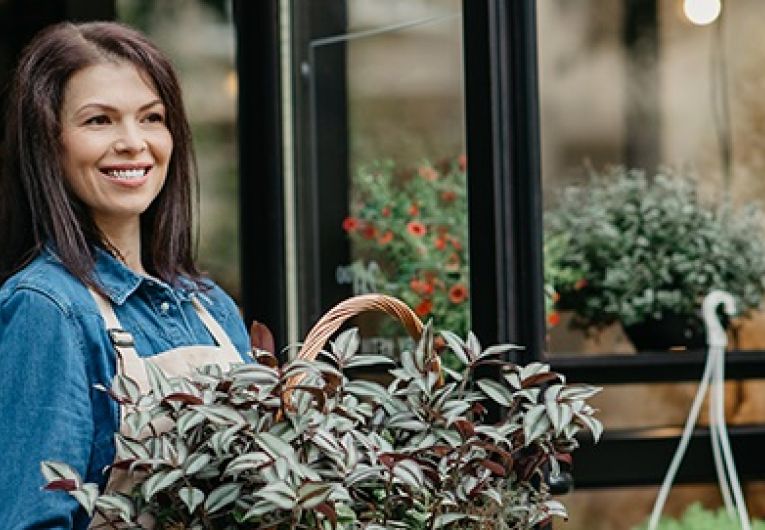
Shifting Consumer Behaviors Reveal Trends in Spending
As small businesses across the country learn to do business differently in this new reality, there seems to be some certainty in trends for consumer behavior – at least for the foreseeable future.
Months into the pandemic, there are indications that consumer behavior has not only shifted but “might become more entrenched,” according to a report by Hanover Research, a firm that specializes in providing market research and analytics.
These are the 4 changes highlighted by the Hanover Research report:
Essentials, essentials, essentials
Before the pandemic, consumption in most industries was healthy, from travel and transportation to apparel and beauty supplies.
These days, what people spend on is on a vastly different scale. It’s no surprise, given the scarcity of these products in grocery stores across the country, but essential items remain a fixture in consumers’ shopping carts – a trend that won’t be going away anytime soon.
“Overall consumption will likely stay depressed for at least a couple of years,” according to the Hanover Research report. “While consumers have started spending in non-essential categories again, we expect spending to be disproportionately focused on essentials in the near future.”
Home is where everything is – for now
As numbers for COVID-19 cases rise and health experts advising to limit public outings as much as possible, homes have become the central hub for families. In the analysis from Hanover Research, the “home-centered economy” will continue to see growth.
“We expect the relative spending in at-home categories to remain high,” the report states.
This includes previously out-of-the-home activities such as work and school, communication, and entertainment. Home improvement and cooking are two other categories that are experiencing an exponential increase.
“Investment in at-home fitness through equipment purchases and online activity is growing. Consumers still expect to spend more time on at-home activities, even in less-restricted regions.” - McKinsey & Company.
Online shopping is here to stay
While online shopping was trending upward before the pandemic occurred, COVID-19 has accelerated this shift over the past few months. It’s a trend that experts agree will continue to grow in 2021.
“You will see that e-commerce’s share of retail jumped from about 10% to 20% in April before coming down to a little over 15% in June – we expect this metric to stay at an elevated level relative to its previous trajectory,” according to the Hanover Research report.
Even with social distancing rules in place, consumers are still shopping, albeit from the safety of their homes. Essential items – groceries, household supplies, and personal hygiene – will continue to grow, but so will nonessential categories.
“Even discretionary categories such as skin care and makeup, apparel, and jewelry and accessories show expected customer growth of more than 15 percent,” - McKinsey & Company.
Some items to consider:
- Reassess customer buyer journeys to identify any changes. With the increased dependence on digital and online shopping, consumers will likely stick to this habit even for the long run.
- Adjust your marketing strategy to include digital, making it a primary focus.
“The overwhelming majority of consumers (88%) expect companies to accelerate digital initiatives due to COVID-19,” according to a report by Salesforce Research.
Self-care takes precedence in healthcare
A major concern during this pandemic is physical and mental health. As many hunker down in anticipation of a deadlier flu season while dealing with other health concerns, there is a continued rise in consumers investing in self-care and telehealth options.
While some gyms and fitness centers are slowly reopening under social distancing guidelines, consumers have, for the past few months, adapted to wellness habits due to the pandemic. Taking charge of your health, whether it’s for one’s self or family, is now a priority.
“Physical and mental health have emerged as primary concerns … as consumers increasingly turn to self-care and tele-health options to make up for missed in-person appointments,” according to the Hanover Research report.
While it’s clear that with change a constant during the pandemic, the ability for small businesses to adapt and pivot to adjust to consumer needs is key. However, it’s a good idea to keep these four consumer behavior trends in mind when it comes to planning for the next year.
The trends, insights, and solutions you need to grow your business.
By signing up, you’re subscribing to our monthly email newsletter, The
Wire. You may unsubscribe at any time.
Your information stays safe with us. Learn more about our privacy
policy.











![[#MSP_NAME#] Logo](/themes/sparklight_business/images/transition-logos/migration-banner-logo-[#MSP_CD#].png)
